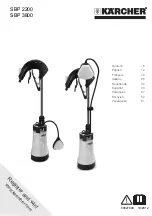
CHECK ELECTRICAL POWER SUPPLY
The electrical power should be checked to determine if ade-
quate power is available, and near constant voltage can be
maintained. If there is any question concerning the power
supply, contact the local power company for corrections; other-
wise, unsatisfactory performance may result.
SELECTING THE BEST LOCATION
Several important factors must be considered before selecting
the site for the outdoor unit:
•
Distance to indoor coil
•
Proximity to the structure
•
Proximity to vents and exhaust systems
•
Ability to service
•
Sound transmission
•
Air circulation
•
Wind direction
•
Relationship between structure, sun, and unit
•
Distance from power source
•
Defrost drainage
•
Water drainage
•
Average winter snow depth
•
Local codes
Locate the outdoor unit near enough to the indoor coil vicinity
to eliminate lengthy refrigerant line runs. Do not locate the
outdoor unit so it discharges air under eaves or gutters. Rain
or snow melt-off should not be able to run off a roof and down
upon the unit. Be sure vents are not located upwind from the
outdoor unit.
A minimum clearance of 18 inches is required for service at the
control panel and compressor compartment access. A 10 inch
clearance is required for the air inlet to the outdoor coil around
the perimeter of the unit. The air discharge of the unit requires
a 60 inch clearance between the top of the unit and any
obstruction. See Figure 1.
The length of the refrigerant tubing, between the outdoor unit
and indoor coil, should be as short as possible to avoid capacity
and efficiency loss. Excessive spacing of the outdoor unit from
the home can lead to the refrigerant lines being restricted by
trampling or by being punctured by lawn mowers. Locate the
outdoor unit away from bedroom windows or other rooms
where sound might be objectionable.
Adverse effects of prevailing winds, blowing snow or sleet onto
the outdoor coil can be eliminated by placing the outdoor unit
where the wind does not blow across the unit. Trees, shrubs,
corners of buildings and fences standing off from the coil can
reduce capacity loss due to wind chill effect.
Provide ample clearance from shrubs to allow adequate air to
pass across the outdoor coil without leaves or branches being
pulled into the coil. The outdoor unit may never go into the
defrost cycle, even with minor frost build up, during the daytime
in some areas of the United States if it is placed on the south
side of the residence with no shade. However, the heat pump
may lose some efficiency at a south side location with no shade
during the summer while trying to cool the residence.
Consideration should be given to the distance and routing of
electrical service that would have to be run to connect the
outdoor unit.
It is recommended the outdoor unit be mounted upon a solid
base that will not shift or settle. Top of base should be two
inches above grade. This allows enough height for normal
defrost ice build up below the unit in freezing weather. Thought
should be given to water drainage away from the outdoor unit
in summer and when the defrost ice melts on warmer winter
days. Drain holes in the base pan must be kept clear.
In areas where snowfall is significant, the height of the unit base
above grade should be two to three inches higher than the
anticipated snowfall. This clearance is required to provide am-
ple drainage during the defrosting of the outdoor coil. Soil
grading around the heat pump should provide drainage away
from the unit to prevent slippery conditions that may cause
personal injury. See Figure 2.
AMBIENT AIR TEMPERATURE
ON OUTDOOR COIL
AIR TEMPERATURE
ON INDOOR COIL
Min. °DB
Max. °DB
Min.
Max.
Cool
Heat
Cool
Heat
°WB
Cool
°DB
Heat
°WB
Cool
°DB
Heat
50
10*
120
70
57
50**
72
80
* If ambient will be below this, Accessory Kit 2LT06700224 must be installed to cutoff
heat pump.
** Operation below this temperature is permissible for a short period of time when required to
bring the heating area up to 50°F.
TABLE 1 - APPLICATION LIMITATIONS
CONTROL ACCESS PANEL
10" CLEARANCE
COIL AREA
60" OVERHEAD
CLEARANCE
18" SERVICE
ACCESS CLEARANCE
WEATHERPROOF
DISCONNECT
SWITCH
NEC CLASS 1 WIRING
THERMOSTAT
TO FURNACE OR AIR HANDLER
TERMINAL BLOCK
NEC CLASS 2 WIRING
TO INDOOR COIL
NOTE: ALL OUTDOOR WIRING MUST
BE WEATHERPROOF
SEAL OPENING(S) WITH PERMAGUM OR EQUIVALENT
FIGURE 1 - OUTDOOR UNIT LOCATION
515.16-N3Y
2
Unitary Products Group






























